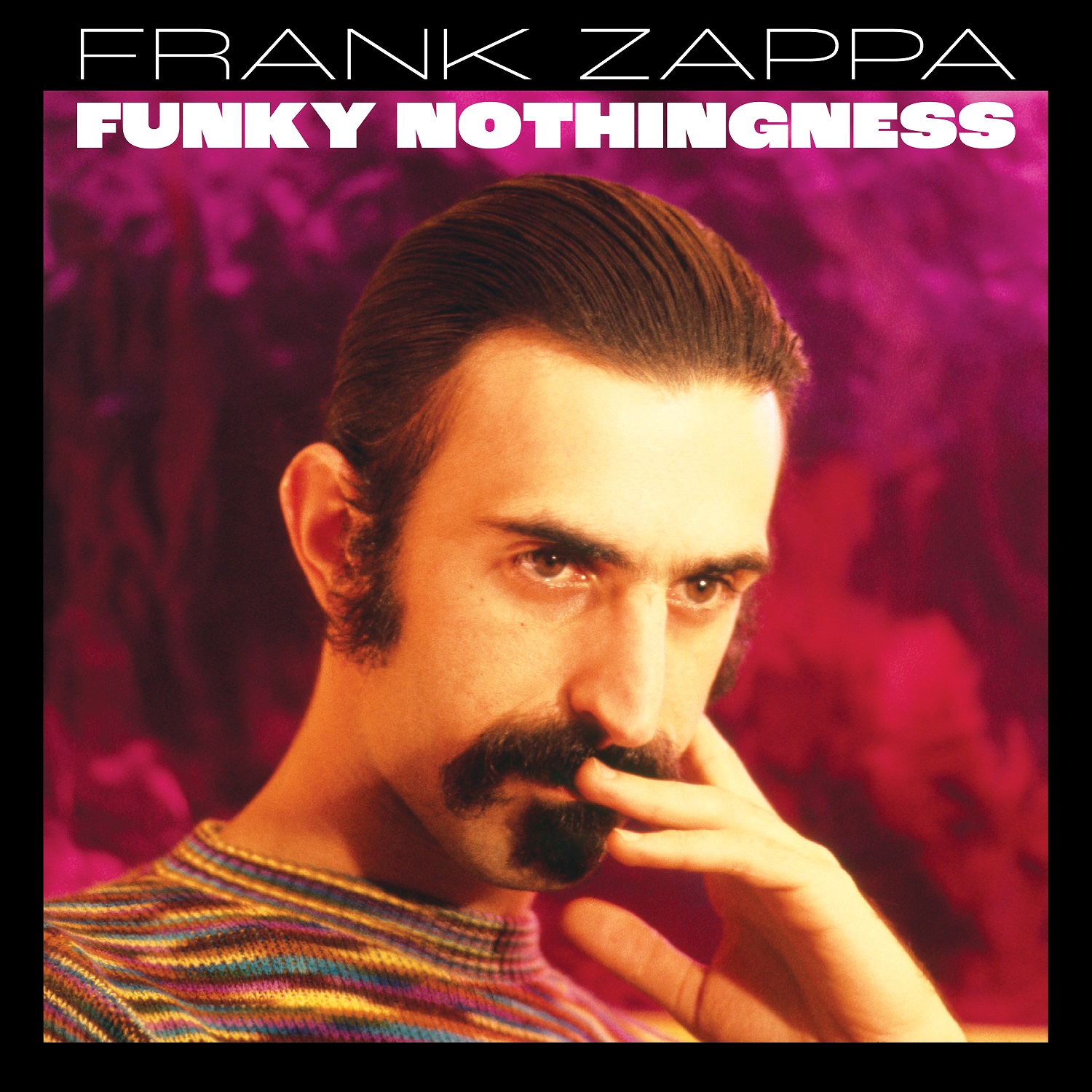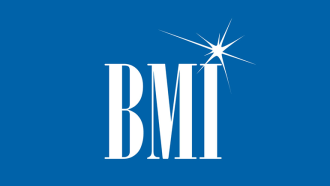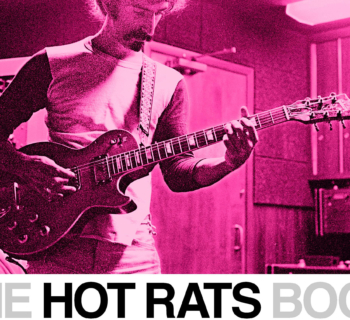Out this week is a "new" Frank Zappa album Funky Nothingness and I'm very excited about this June 2023 retail release out from UMe.
“Funky Nothingness delivers on all fronts, showcasing Zappa’s love for rhythm and blues, picking up where Hot Rats left off with extended instrumental work-outs fusing rock, jazz, and classical elements into music that can only be described as ZAPPA.” – Joe Travers, Zappa Vaultmeister
In 1969, after The Mothers of Invention disbanded, Frank Zappa released his groundbreaking solo debut, Hot Rats. Fusing jazz and rock, the innovative album became one of the artist’s bestselling releases, thanks to classic tracks like “Peaches En Regalia” and “Willie the Pimp.”
Over the following year, in between various projects (including producing Captain Beefheart’s debut, Trout Mask Replica, and emceeing Belgium’s Festival Actuel, where Zappa met British drummer Aynsley Dunbar), he assembled a core group to lay down tracks at Los Angeles’ recently opened Record Plant studio on 3rd street.

A June media announcement from UMe detailed the Funky Nothingness product.
"The sessions, which took place primarily in February and March 1970 at the new studio, featured Zappa once again in the producer’s chair and joined by several of the musicians that played on Hot Rats, including Mothers member Ian Underwood (keyboard, saxophone, rhythm guitar), violinist and vocalist Don “Sugarcane” Harris, and Wrecking Crew bassist Max Bennett.
"The five-piece band was rounded out by Aynsley Dunbar, who had just relocated to Los Angeles and moved in with Zappa following his invite to join the band.

Group shot photo by Henry Diltz, Courtesy of Gary Strobl at the Diltz archive.
"Together the group recorded hours’ worth of original compositions, inspired covers and extended improvisations that drew from Zappa’s R&B and blues roots, while blending influences of the emerging jazz fusion scene. Largely instrumental, these recordings showcased the guitarist’s virtuosity, while offering what could have easily been the sequel to Hot Rats, had it ever been released.
"While Zappa identified his favorite takes and mixed the tracks for eventual release, the wildly prolific musician’s insatiable musical curiosity pulled him in other directions as the year wore on. It’s not known exactly why this material was never released but it’s possible that upon meeting Flo & Eddie, the comedy rock duo of Mark Volman and Howard Kaylan, shortly after the sessions, Zappa was inspired to work with them and assembled a bigger band and moved away from instrumental compositions and more toward vocally oriented material. Flo & Eddie would join the Mothers for Zappa’s Chunga’s Revenge album, recorded mostly that summer and released in October of that year.
"By the end of 1970, Zappa was well into writing and developing his film, 200 Motels and the accompanying soundtrack. All the while this material was put on the backburner.
"Listening back to the tapes from these sessions, which have been unearthed from Zappa’s massive Vault more than five decades later, Zappa Vaultmeister Joe Travers and Ahmet Zappa knew that they had something special. Working with the tracks that Zappa had produced, mixed, and worked on over the years, they compiled an 11-track album, naming it Funky Nothingness after a bluesy, stripped-down piece that the artist had recorded in 1967 at the end of one of the sessions for Uncle Meat.
"Originally intended to open an early version of Chunga’s Revenge, the short, unreleased track 'sets the tone for the album,' explains Travers.
"Although the track was recorded a few years before most of the music presented here, Zappa eventually connected it a build reel, signaling he was planning a release. While a couple recordings from these sessions have been released over the years (fans may remember the 12-minute version of “Sharleena” from 1996’s posthumous collection, Lost Episodes), Funky Nothingness introduces these recordings as a cohesive collection for the very first time.
'“Funky Nothingness, as an album, is special in that it features at least three written compositions, three cover versions and multiple instrumental jam-oriented segments, all previously unreleased,' Travers explains. “It’s very rare to find that amount of music from one set of sessions that has gone unheard for such a long period of time.”
Produced and compiled by Ahmet Zappa and Joe Travers, Funky Nothingness was released June 30 via Zappa Records/UMe in a variety of formats, including a three-disc expanded deluxe edition that presents the 11-track album on disc 1 along with two discs of outtakes, alternate edits, unedited masters of songs from the era, plus several improvisations, and other “bonus nothingness.”
"In all, the 25-track collection includes 23 unreleased tracks totaling nearly three and a half hours of never-before-heard music. The Funky Nothingness album is also available as a double LP on both 180-gram black vinyl and limited edition clear violet 180-gram vinyl, pressed at Optimal, with lacquers cut by Chris Bellman at Bernie Grundman Mastering. The vinyl consists of Zappa’s vintage mixes of the tracks. There's a limited edition color pressing, which includes a collectible guitar pick, is available exclusively at Zappa.com, uDiscover Music and Sound of Vinyl.
"All three discs implement takes of “Chunga’s Revenge,” which would serve as the title track to Zappa’s actual follow-up to Hot Rats, released in October 1970. The “Basement Version,” found on the main album, was recorded in Zappa’s basement at home in Laurel Canyon using a 4-channel quadrophonic set-up, nearly three years before the format was made available to the consumer. Zappa then created a stereo mix down from the quad track which is what is included here.
"Perhaps most importantly, these recordings were an unusually rare find, reveals Travers. “With archival releases from the vault, it is normal to find different arrangements of past tunes featured in live concerts and studio settings with other bands, but actual NEW compositions are few and far between, especially from within Zappa’s golden years of the ‘60s and ‘70s.
"Funky Nothingness delivers on all fronts, showcasing Zappa’s love for rhythm and blues, picking up where Hot Rats left off with extended instrumental work-outs fusing rock, jazz, and classical elements into music that can only be described as ZAPPA. The guitar work and virtuoso musicianship are in full effect.”
During 2013 I conducted an interview with Howard Kaylan. In 1966, Howard attended the Zappa and Mothers of Invention Freak Out! Tom Wilson-produced recording sessions in Hollywood. Kaylan and Volman, co-founders of the Turtles, were mainstays in Zappa's 1970-71 recording and touring world.
"Back in that era in 1966 and ’67, before ‘Happy Together’ hit, and we were still L.A. street people working in the same clubs and stuff, there was enough of a camaraderie there. Not only though our knowing him, but also through Herb Cohen and going to the Zappa Log Cabin in Laurel Canyon.
“I worshipped We’re Only In It For The Money, one of the greatest rock records of all time. The cover art, too. It was better to me than The Beatles were at the time. There was a lot more content. A lot more undertone. A lot more sub-plot. A lot more ‘Wake Up America’ kind of thing. Whether it was real or imagined, I thought that Frank was the most brilliant writer that I had ever seen. Socially, since Dylan. I loved The Beatles stuff, and not to take away from it, but this was new. I wore out copies of it. 8-track. I had it every place.
“I loved him and the records. He was singing about growing up. I was trying to sing about growing up, too. It wasn’t that far apart. Nobody made distinctions in that canyon of dreams back then as to what type of music you were doing. If you were Lester Chambers and you were living in that canyon Joni Mitchell didn’t question what kind of music you were doing. Nobody did. Everybody was in there for themselves. To make their music shine for a minute while the bright stars were already living there. We didn’t want to change things. We wanted so badly to be a part of it that finding our place was so important. I’m not sure as Turtles we ever found our place but as Mothers we sort of busted out of our comfort zone a little bit. I think the Turtles were comfortable for us. Because it was just the Cross Fires, a [Westchester] high school band, so we could always fall back on our memories and our school yard stuff.
“The contact that I had with Frank was mostly through Herb Cohen. We’re like third cousins. Herb Cohen was at my Bar Mitzvah. Mark and I went to see Frank locally on the UCLA campus at Pauley Pavilion with conductor Zubin Mehta in May, 1970.
"Well for me, it wasn’t so much we did on stage it was his demeanor off stage that made him paternal to me. On stage he was a band leader and we were guys for hire. The fact that we got away with improv only meant we were smart enough to know when to get out of a bit in time for the music to come in. That’s what Frank respected.
"You could go off book as long as you got right back. No beats were lost and something was added. If you added something to the routine it was always appreciated and repeated if you could on a nightly basis or made to be part of the folk lore in some way. If it was not appreciated, Frank would let you know right on stage in no uncertain terms that this was not the time nor the place for that kind of thing. And later you would discuss it with him. It wouldn’t be a slap on the hand parent kind of talk. It would be very familial, more brotherly than paternal. But something that I never had before. Which was an older figure that I respected respecting me back. The only other older figures in my life had been agents and managers who pretty much lied to me."
In 2016 I spoke with Mark Volman about Zappa.
"I was a big fan of Frank early on. Howard and I from the Turtles were around the Freak Out! recording sessions and we later saw Frank and the Mothers of Invention in New York in 1967 when Frank and that band had a residency at the Garrick Theatre. We were invited to Frank’s apartment in New York after one of the shows.
“Herb Cohen, Frank’s manager, invited us to go to the UCLA show with Zubin Mehta in 1970. Herb was a second cousin of Howard Kaylan, my partner in the Turtles. We knew the ‘California mentality’ that defined Frank. We bonded over doo-wop and soul music.
“After the UCLA show we were asked backstage. Frank then invited us that weekend to a barbeque at the Zappa’s house. We brought our families. Frank told us to bring our saxophones. He took us downstairs to the ‘dungeon of horror’ and played some music for Howard and me. He quickly saw that we were not sax players.
"He said, ‘Look, we’re going over to England for eight shows. How would you like to come along and sing?’ We also did some US shows and recorded with him for the first time a piece of music that came out on Chunga’s Revenge. We did some other songs in the studio with Frank including ‘Rudy Wants To Buy Yez A Drink’ and ‘Would You Go All The Way?’
“Frank was a Mother but we were Turtles, and he always wanted to know about our experiences. He thought we were stars. To him, the Turtles were like the Beatles. ‘What was that like?’ We told him a story about groupies. With that story began a two year relationship culminating in the motion picture, 200 Motels. Frank let us go through a litany of Los Angeles things that were in the live Fillmore East album. We were singing the praises of one of the greatest cities in the world. Like Frank, we were Los Angeles children. 200 Motels becomes the embodiment of our time with Frank. And we did Just Another Band From L.A. with him. After Chunga’s Revenge, we had what I used to call, ‘studio survival sessions,’ which is music he had recorded live and then we would work on it in the studio and clean it up. Some of those recordings were taped in concert. He recorded every show we did over 2 years.
“Rehearsing with Frank was scary. He was the embodiment of a union man. There was never a time for fun. Putting together ‘Billy the Mountain’ was a series of vignettes that connected around a 43 minute opera. Howard and I usually started with Frank on guitar, the three of us, and we were given the music to learn. Frank felt most comfortable playing and singing the melody so there are very few times where Frank placed himself into the four-part harmony or three-part harmony. He kind of left that to Howard, Jim Pons, and me. We’d take the bit and show up at the rehearsal hall on Highland Avenue and lead the band through what he wanted.”
(Harvey Kubernik is the author of 20 books, including 2009’s Canyon Of Dreams: The Magic And The Music Of Laurel Canyon and 2014’s Turn Up The Radio! Rock, Pop and Roll In Los Angeles 1956-1972. Sterling/Barnes and Noble in 2018 published Harvey and Kenneth Kubernik’s The Story Of The Band: From Big Pink To The Last Waltz. In2021 they wrote Jimi Hendrix: Voodoo Child for Sterling/Barnes and Noble. Otherworld Cottage Industries in 2020 published Harvey’s Docs That Rock, Music That Matters.
Kubernik’s writings are in several book anthologies. Most notably, The Rolling Stone Book Of The Beats and Drinking With Bukowski. Harvey wrote the liner notes to the CD re-releases of Carole King’s Tapestry, The Essential Carole King, Allen Ginsberg’s Kaddish, Elvis Presley The ’68 Comeback Special, The Ramones’ End of the Century and Big Brother & the Holding Company Captured Live at The Monterey International Pop Festival.
During 2006 Harvey spoke at the special hearings initiated by The Library of Congress held in Hollywood, California, discussing archiving practices and audiotape preservation.
In 2017 Harvey Kubernik appeared at the Rock and Roll Hall of Fame in Cleveland, Ohio, as part of their Distinguished Speakers Series). •














